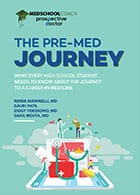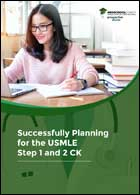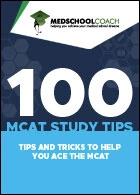
Table of Contents
All USMLE Step 1 scores are reported as either a Pass or Fail result for tests administered after January 26, 2022. This scoring system was reviewed in late 2024, and it was decided that no changes were to be made in 2025.
Students must achieve a score of 196 on the 3-digit score system to pass the exam. However, the USMLE no longer reports exact score measurements. You can see how close you were to passing if your score does not meet the minimum threshold for a passing grade.
In early 2020, my colleague Sahil shared his thoughts on the NBME announcement about the transition to a Pass/Fail scoring system. With 3+ years of USMLE test results in the current system, let’s look at how this change has impacted medical students and more.
Want to get a jump start on studying for Step 1? Our experienced tutors help students study more effectively for the best chance at a Pass.
Step 1 Passing Rates Are Down
About 95% of US/Canada test-takers passed the United States Medical Licensing Examination (USMLE) Step 1 until the scoring system changed to Pass/Fail in 2022. Since then, pass rates have dropped across the board, a phenomenon that has come to be known as “the Pass/Fail effect”.
| MD Students | DO Students | International Medical Graduates (IMGs) | First Time Test Takers | |
Pass rate (2021) Under 3-digit scoring | 95% | 94% | 77% | 90% |
Pass rate (2022) Under Pass/Fail scoring | 91% | 91% | 71% | 84% |
Pass rate (2023) Under Pass/Fail scoring | 90% | 86% | 68% | 83% |
Pass rate (2024) Under Pass/Fail scoring | 89% | 86% | 70% | 82% |
Source: https://www.usmle.org/performance-data
Due to the scoring change, pass rates have decreased for MD, DO, and international students.
MD students saw a 6% decrease in pass rate while DO students, IMGs, and first-time testers saw 9% pass rate decreases (7-8 percentage points, but 9% change).
Some variation is to be expected, especially as the score required was slightly higher. However, students have reported a significant reduction in the study time they devote to Step 1.
No wonder, because with the move to Pass/Fail, there’s no longer an incentive to study as hard as possible for Step 1. Instead, the emphasis has shifted to Step 2 scores, which have now become the key metric for residency admissions.
One study found that applicants with a numerical score were placed in the top and bottom tiers of residency matching, while applicants with a “Pass” score were more frequently placed in the middle tier. This research concludes that “comparing applicants with numeric…scores to those with pass/fail scores can have a significant impact on the ranking of those applicants.”
Despite the shift to Pass/Fail, many students I talk to still stress out about Step 1 because a failure is generally considered a “black mark” when applying to residency programs. Yes, students may retake Step 1, but the initial failure is reported on any future residency applications.
Read Next: USMLE Test Day — Set Yourself Up for Success
Student Well-Being Is Taking a Hit
USMLE Step 1 moved to a Pass/Fail scoring system partly due to concerns about student health and wellness during the first two years of medical school. However, while students generally agreed to the change, their mental health has suffered.
Studies now show that switching to Pass/Fail has not achieved its intended goal. USMLE sought to reduce stress on test takers. Instead, among 102 study participants with a 97% Step 1 pass rate, two-thirds reported their commitment to medical education “exceeded what was reasonable for their well-being,” having to endure increased stress, anxiety, and burnout.
Students are still sleep-deprived during the Step 1 study period. Losing sleep can lead to worse test performance and physical and mental health.
What’s more, with the loss of a key datapoint for residency admissions, clerkships and Step 2 now feel more high-stakes than ever. Students have reported feeling more anxiety about Step 2 CK (Clinical Knowledge) now that Step 1 scoring does not contribute as much to residency applications.
One study suggests the following fixes to the mental health crisis facing med school students taking USMLE Step 1:
- More frequent academic advisor meetings
- Increased access to mental health counselors
- Reduced isolation from others
- More NBME test prep materials
- Structured peer mentoring
However, not everyone sees this change negatively. Emily Zitkovsky, a medical graduate from Brown University, sees it as a little more stressful, but better for medical students in general:
Overall, I think this is a net positive change. Medical school and applying to residency are stressful, regardless. Removing the emphasis on perfection and the need to memorize small details that aren’t super clinically relevant is a good thing for most people. My best advice to medical students is to focus on learning at whatever stage you are at. You can’t control changes to the NBME exams or the residency application process, but developing a strong foundation in preclinical and clinical medicine will benefit your patients and your future success.
Watch This Free Webinar: Preparing for the USMLE Step 1
Stress Is Delayed or Increased
The primary reason the USMLE changed its scoring policies was, as they stated, “to help reduce the overemphasis on USMLE Step 1 exam numeric scores (among both examinees and secondary users of exam scores, such as residency program directors).”
However, transitioning from a three-digit score to a Pass/Fail outcome seems to simply delay the stress on students’ well-being.
Step 2 is now more important and more stressful than it was before. Step 1 and Step 2 scores were used to influence the NRMP Match. Now, there’s only one standardized metric to use for residency selection (the Step 2 CK score). Both of these granular metrics were useful in predicting success during residency.
Step 2 is a busy time already. Transitioning Step 1 to a Pass/Fail scoring system pushes test anxiety to a future time (Step 2 CK) when med students are busy with clinical rotations.
Learn More: Step 2 CS Permanently Ended
Maya Guhan, an MD/MBA graduate from Baylor College of Medicine, took USMLE Step 1 after this Pass/Fail change. Here’s what she had to say:
I feel that the stress has shifted to a different period of time. Students now feel that they have to do something to “stand out.” Some competitive residency applicants have even felt increased pressure to take a research year.
To be honest, I am not sure how Step 1 being P/F will affect residency match rates and overall student education in the long run, and I’m not sure if faculty or program directors know either. At this point, I feel that my peers and I are worried about our future and doing whatever we can to differentiate ourselves, without knowing exactly what it is that program directors are looking for.
Students Focusing More on Subjective Metrics
Students in medical school must now emphasize non-numerical application features such as research, letters of recommendation, extracurricular activities, and clerkship grades.
Extracurriculars, in particular, should be approached more intentionally than ever. You’ll need to plan in advance for research, service, and leadership opportunities during medical school. Ensure these are relevant to your preferred specialty.
Don’t just take on every extracurricular activity you stumble across. In 2023, ERAS limited residency applicants to a maximum of 10 extracurriculars.
Perhaps this shift in focus is a positive move in the healthcare community, but it does force med students to change what their predecessors have had to do. Without precedent, it can be stressful to proceed into the unknown.
My hope is that residency program directors will view this as an opportunity to focus more heavily on activities likely to encourage personal growth, rather than on getting a high score on a single standardized test between M2 and M3.
Impact on Underrepresented Communities
With the limited data available on underrepresented test takers, it seems like the push to Pass/Fail has not addressed inequities like the community hoped it would. Early on, students and program directors were hopeful.
One 2024 study gives the Step 1 scoring change credit while warning about Step 2: “Despite [the] belief that the Step 1 Pass/Fail scoring system may mitigate one barrier for [underrepresented] students, emphasis on Step 2 CK and away rotations places additional barriers.”
Some in the medical community have expressed concern that the push to non-standardized metrics will have a negative impact on underrepresented students. Here’s what Physician Advisor Amar Mandalia, MD (also a former AdCom) thinks:
Survey results on the perception of scoring change to P/F for Step 1 published in October 2021 demonstrated students/residents who identified as Underrepresented in Medicine (UiM) welcomed the change. They felt that it would decrease inequities between UiM and non-UiM.
Now, with a few years of data, we see the international students have seen the largest drop in pass rates — only marginally worse than DO students and first-time testers. IMGs are typically UIM, so the P/F system does not seem to help underrepresented communities in this way.
I also see that the increased emphasis on Step 2 further highlights inequities seen in medical education and extracurricular opportunities between lower- and higher-tier programs.
Higher-tier medical schools may encourage students to pursue research and extracurricular activities that they have to offer for a holistic approach. Lower-tier programs, where resources could be sparse or lacking, may not be able to afford the same opportunities to their students.
Impact on Osteopathic and IMG Students
DO and IMG students felt that a high Step 1 score previously aided their residency prospects by demonstrating their competency in key medical knowledge. They now worry about being disadvantaged in the Match compared to MD applicants without it.
In 2024, the IMG residency Match rate remained fairly steady. In 2024, DO (doctor of osteopathic medicine) students saw a record high of placements in PGY-1 residency positions. It seems their worries may have been misplaced.
They should have been worried about their pass rates dropping. DO and IMG pass rates fell more steeply than MD pass rates: 9% vs. 6%.
What to Do if You’re Concerned
A career in medicine has always been a competitive one, but you don’t have to feel unprepared. With changes to scoring on USMLE Step 1 and, as of January 2024, a new passing score for Step 3, students can adapt to ensure they are ready for licensure.
Here are the top tips our MedSchoolCoach team recommends to medical students like you who are preparing to get a Pass score on the USMLE Step 1:
- Plan ahead: Create a 4-year plan for the timing of major extracurriculars and standardized testing. Review this plan on a short-term and long-term basis at least twice per year, preferably once per quarter.
- Study hard for Step 1: Make an effort to understand the exam structure and how questions are asked. Find practice questions and hone your process of elimination skills. Take high-quality practice exams until you consistently get a Pass score.
- Focus on high-yield topics. Research what topics are high-yield vs. low-yield. Step 1 tests your basic science knowledge on biochemistry, anatomy, and physiology.
- If all else fails, guess. Unanswered questions are counted as wrong answers, so it’s best to guess on questions you aren’t sure about.
FAQs
All USMLE test scores are delivered within 2-8 weeks after your test date. The NBME says that while most results are delivered within 4 weeks, you should allow up to 8 weeks in case of unforeseen circumstances.
Your score will remain available and free to access for approximately one year after your test date.
According to the NBME, no individual or group may have USMLE test results accelerated for any reason. You’ll need to wait in line for your scores, regardless of extenuating circumstances.
You can take Step 1 up to 3 times within 12 months. Your 4th attempt must be at least 1 year after your first attempt and 6 months after your most recent attempt.
You cannot retake a Step if you have passed — unless your scores are out of date for your residency application.
If you have to take the USMLE more than once, your chances of matching into a competitive specialty drop dramatically. Every Fail is reported on your residency application.
MedSchoolCoach Offers Personalized USMLE Step 1 Tutoring
USMLE Step 1 is vital to getting your license to practice medicine. The Pass/Fail scoring system seems to have increased student stress while decreasing student pass rate. However, the USMLE committee has recently chosen not to revert any changes to the scoring system.
If you’re concerned about your USMLE exam scores, let our experienced tutors help you craft a personalized study plan that makes sense for your schedule and unique needs. The more prepared you are, the less stressed you’ll feel!
Our USMLE/COMLEX Tutors have an average of 10 years of teaching experience. Our expertise will help you work smarter, not harder.

Joel Ramirez MD
Dr. Ramirez is an integrated vascular surgery resident at UCSF who is passionate about teaching and tutoring for several board exams. He has served on the University of California, San Francisco School of Medicine admissions committee and is committed to being a leader in medical education.





